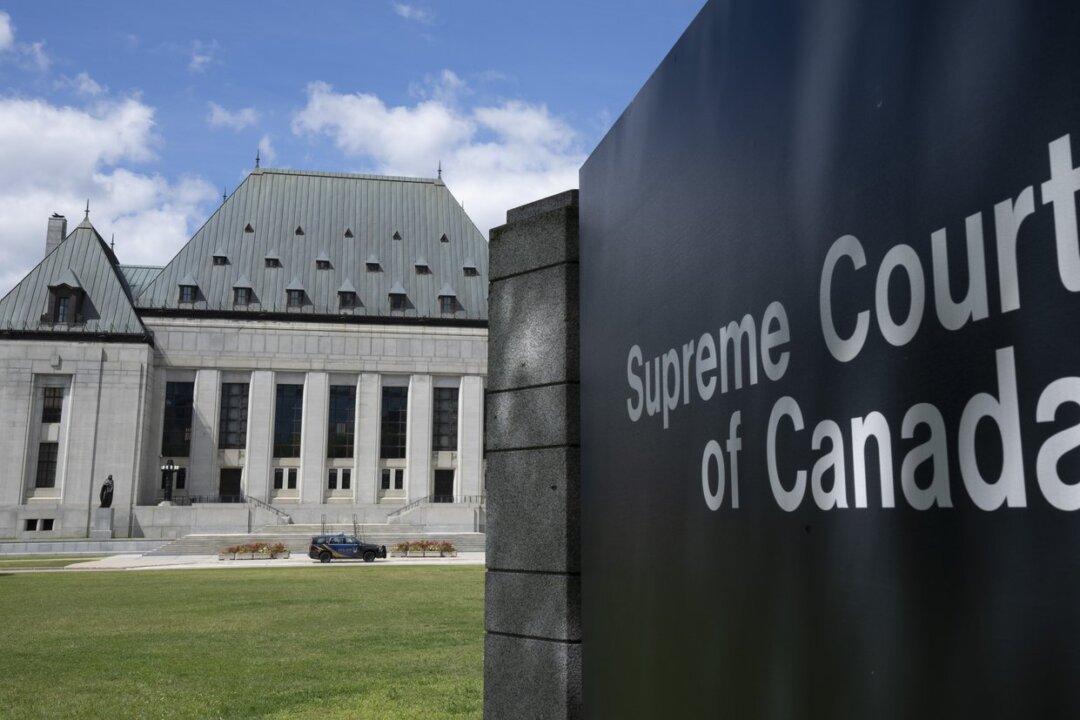The NDP is facing pressure from the Conservatives to break its agreement with the Liberals and trigger an early election, and doing so would not leave many of its big agenda items on the table, a review of the deal shows.
Major pieces of legislation supported by the NDP have been adopted in the areas of dental care, child care, and energy transition, while the pharmacare bill is in the Senate after clearing the House of Commons in June.
Tory Leader Pierre Poilievre
asked NDP Leader Jagmeet Singh to drop his support for the Liberals in a
letter made public on Aug. 29. Poilievre said the NDP promised the alliance would help make things more affordable for Canadians and pointed to Singh complaining recently about the high cost of living.
To remain in power as a minority government, the Liberals struck a
supply and confidence agreement with the NDP in March 2022. In exchange for support on confidence votes in the House of Commons, the Liberals agreed to implement items on the NDP’s agenda.
The NDP has threatened to pull out of the agreement several times but the Liberal government managed to keep the deal.
Ahead of the new parliamentary session starting in mid-September, and with the deal extending until the end of the spring session of 2025, the partners have not said what area of the agreement they'll focus on.
The deal has now been in place for nearly 2 1/2 years, and the vast majority of elements in the agreement have been carried out.
Government House Leader Karina Gould, who manages inter-party issues, was asked by reporters on the sidelines of the recent Liberal cabinet retreat in Halifax what her party needs to do to keep the NDP on board.
“We’ve signed the agreement till the end of June, so as far as I’m concerned, that’s something that has been signed and agreed to,” she said on Aug. 27. “So I’m going to be working on that premise.”
Gould said there are still parts of the agreement that need to be accomplished and that her government would “keep pushing in that direction.” The minister added that she is “fairly confident” the “strong agreement” will survive until its expiry date.
The Epoch Times reached out to the NDP for comment but didn’t hear back.
‘Better Healthcare’
Putting in place a “better healthcare system” is the first theme in the Liberal-NDP agreement. In addition to dental care and pharmacare, the deal said the government would need to increase investments and work with the provinces. All 13 provinces and territories have signed on to Ottawa’s new health accord, with
Quebec being the last one in March.
The final clause on health care relates to the tabling of a Safe Long-Term Care Act for seniors. Health Canada
published the results of public consultations on the future bill on Aug. 29.
The second theme of the supply and confidence agreement relates to “making life more affordable.” Most of the elements therein have been actioned, such as introducing the Early Learning and Child Care Act, launching the Housing Accelerator Fund, and providing a $500 one-time top-up to the Canada Housing Benefit.
The major clause in the affordability section that hasn’t been implemented is the Homebuyer’s Bill of Rights to end practices like blind bidding, which prevents bidders from knowing the bids of others and drives up home prices as a result. It featured as a Liberal election campaign
promise in 2021 and
appeared in Budget 2022.
Under the third theme of the Liberal-NDP deal, addressing the “climate crisis,” essentially everything has been implemented. It called for passing “Just Transition” legislation to provide jobs to workers impacted by the transition out of oil and gas. The legislation was renamed the Canadian Sustainable Jobs Act and
became law in June.
The Liberal government has also been working on a
plan to phase out public financing of the oil and gas sector and has implemented
programs to increase home energy efficiency.
On the labour front,
implementation of 10 days of paid sick leave for federally regulated workers came into force in December 2022.
The other item under that theme was to introduce legislation to prohibit the use of replacement workers during a lockout or strike. The major component of that legislation has become reality, with
Bill C-58 receiving royal assent in late June.
With regard to reconciliation with First Nations, Inuit, and Métis,
progress has been made on indigenous housing, and a
roundtable has been held to look into the issue of missing and murdered indigenous women and girls. Ottawa has also provided
funding to indigenous communities to conduct burial searches at the sites of former residential schools.
The two clauses under the theme of putting in place a “fairer tax system” have also been carried out. To address the first clause, relating to tax changes on financial institutions,
Budget 2022 introduced measures to draw additional revenues from banks and life insurance groups. These included a one-time 15 percent tax on taxable income above $1 billion and a permanent increase of the corporate income tax rate by 1.5 percentage points on taxable income above $100 million.
The second clause was to put in place a publicly accessible beneficial ownership registry for corporations. This was
implemented in January, requiring businesses to file information with Corporations Canada regarding individuals who have significant control, with some of that information made publicly available via online search on the agency’s website.
‘Making Democracy Work’
The last theme of the Liberal-NDP agreement pertains to “making democracy work for people.” The deal calls for expanding election day over three days, allowing people to vote at any polling place within their electoral district, and improving the process of mail-in ballots.
Briefing material for Chief Electoral Officer Stéphane Perrault’s attendance at a House committee on May 18, 2023, indicates that he pushed back against the idea of expanding to three days of voting, saying it would “likely result in decrease in services.”
Elections Canada’s “ability to deliver an election that Canadians trust could be threatened,” he added. The electoral body proposed adding two days of advance voting instead.
Perrault said allowing people to vote at any polling place within their electoral district could lead to double voting. To prevent this, he said Elections Canada plans to roll out electronic voter lists for the next general election.
Another point of the agreement under the democracy theme pertains to maintaining the same number of seats for Quebec in the House of Commons. This clause was written before completion of the 2022
–23 federal electoral districts
redistribution process for
Quebec in June 2023. While the process revised the electoral map for the province,
Quebec kept its number of seats at 78.
In light of the exhaustive list of items in the supply and confidence agreement, the NDP could pull out of its deal with the Liberals at this time, having obtained most of its demands. The choice could come down to determining whether it is politically advantageous to break the deal in order to have an early election.
The latest
Léger poll on federal voting intentions, based on a survey conducted between Aug. 23 and Aug. 25, suggests support for the NDP has dropped 5 percentage points, to 15 percent, compared to July. Conservatives lead with 43 percent, followed by the Liberals at 25 percent.
The NDP would not lose much on its agenda by breaking with the Liberals, but it could end up losing seats. A true
test of its popularity will come with the Sept. 16 byelections, when it will defend a stronghold in Winnipeg and seek to unseat the Liberals in their stronghold of Montreal.






